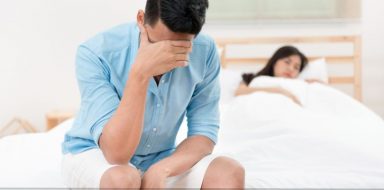What is Mono Disease?
Infectious mononucleosis, or mono disease, is characterized by complex clinical signs and symptoms caused by the Epstein-Barr virus (EBV). Other names of this infection are the glandular disease, kissing disease and mono disease.
Approximately 90% of patients with the mono disease are caused by EBV. The rest of them are caused by another type of virus called Cytomegalovirus (CMV).
In young children, the primary EBV infections are usually asymptomatic, meaning no symptoms show at all. It could be a reason for cases of the fever of unknown origin. This disease is not fatal in patients with a normal and competent immune response, unless there are neurologic complications, airway obstructions or ruptures of the spleen.
Symptoms of Mono Disease
It takes one to two months from the time of exposure before symptoms show up, hence, some people could not recall a close contact with a person suffering from sore throat.
Also, take note that some patients do not show any symptoms, making them think there is no reason to see a doctor. If symptoms are present, here is the list of what you will be experiencing:
- Prolonged feeling of fatigue or general discomfort
- Pharyngitis or sore throat
- Low-grade fever
- Swollen lymph nodes
- Rashes
- Swelling around the eyes
- Nausea without vomiting
- Lack of appetite
- Muscle and joint pain are uncommon but may occur
Mono Disease in Children
Though it seems the incubation period in adults is pretty long, it is opposite in cases of children. The onset of symptoms may be abrupt as well.
Sore throat is the most common complaint by children and it slowly worsens during the first week. Some patients are seen with pus on their throat. There can also be an associated headache.
Tonsils become enlarged and may cause airway blockage. Since it will be painful and difficult to swallow due to swollen tonsils, the appetite of your kid may be lost and drinking fluids may also lessen. Signs of dehydration should be watched out for.
Lymph nodes at the back of the neck are usually swollen. Other parts where you may palpate swollen lymph nodes as well are the front and side of the neck, and the area underneath the jaw.
Fever peaks during the afternoon and is around 39C, though the temperature may reach as high as 40C. Rashes are present in a small percentage of children affected by the mono disease. The rashes are reddish, flat or can be a papule-like in form.
Disease Transmission
EBV is transmitted through bodily fluids, usually saliva, hence you can get infected through kissing. The virus persists in the saliva of an infected person for months even after the symptoms have been resolved.
Another way of getting it is through indirect exposure to the infected person. Let's say you happen to share food or drinks with the infected person, or maybe you have shared a utensil (spoon or fork) with a person who has contracted the mono disease. The utensil remains a carrier of the virus as long as it is still moist. Other bodily fluids in which EBV virus can be transmitted are blood (through blood transfusion, although very rare) and semen (through sexual intercourse).
Period pain can vary from person to person. Here are some home remedies for menstrual cramps that can help ease the painful symptoms.
How is Mono Disease Diagnosed?
In children and young adults, the classic triad of fever, sore throat and swollen lymph nodes, gives a suspicion. Physical examination and laboratory abnormalities will be required to support the diagnosis.
The workup on the suspected patient is composed of the following:
- Blood tests to rule out other diagnoses that the doctor might also be considering.
- Monospot test or Heterophile antibody test, which will require one to two weeks before getting a positive response. This may be repeated if the result shows negative, but the doctor is highly suspecting mono.
- Computed tomography (CT) scan, Magnetic Resonance Imaging (MRI) and Electroencephalograph (EEG) are only requested if there are suspected central nervous system involvement.
How to Treat Mono Disease
The main treatment for mono disease is supportive care. This includes hydration and symptomatic treatments, such as analgesic for fever, pain relievers for the muscle and joint pains, throat lozenges or sprays for sore throat, or 2% lidocaine solution as mouth and throat wash for throat discomfort. Bed rest is not recommended, as it may slow down your recovery. You may do your regular activities but limit only based on your energy level.
Other Medications
Trials have been done in the use of Acyclovir, an antiviral medication, and Ranitidine for infectious mononucleosis. However, the trials showed these medications have no significant benefit for infected patients with the mono disease, hence they are not recommended.
Based on clinical observations and case reports, the use of corticosteroids provides benefits to patients with severe throat edema. These medications also show good results in decreasing the throat pain in children.
Mono Prevention
Unfortunately, there is no vaccine yet that is available against mono disease. As we have mentioned above, the virus may still persist in your saliva even if you do not feel sick anymore. That means you may still be contagious to other people. The only chance of lowering your risk of infection is washing your hands as needed and avoidance in sharing food, drinks and things like silverware and toothbrushes with other people.







